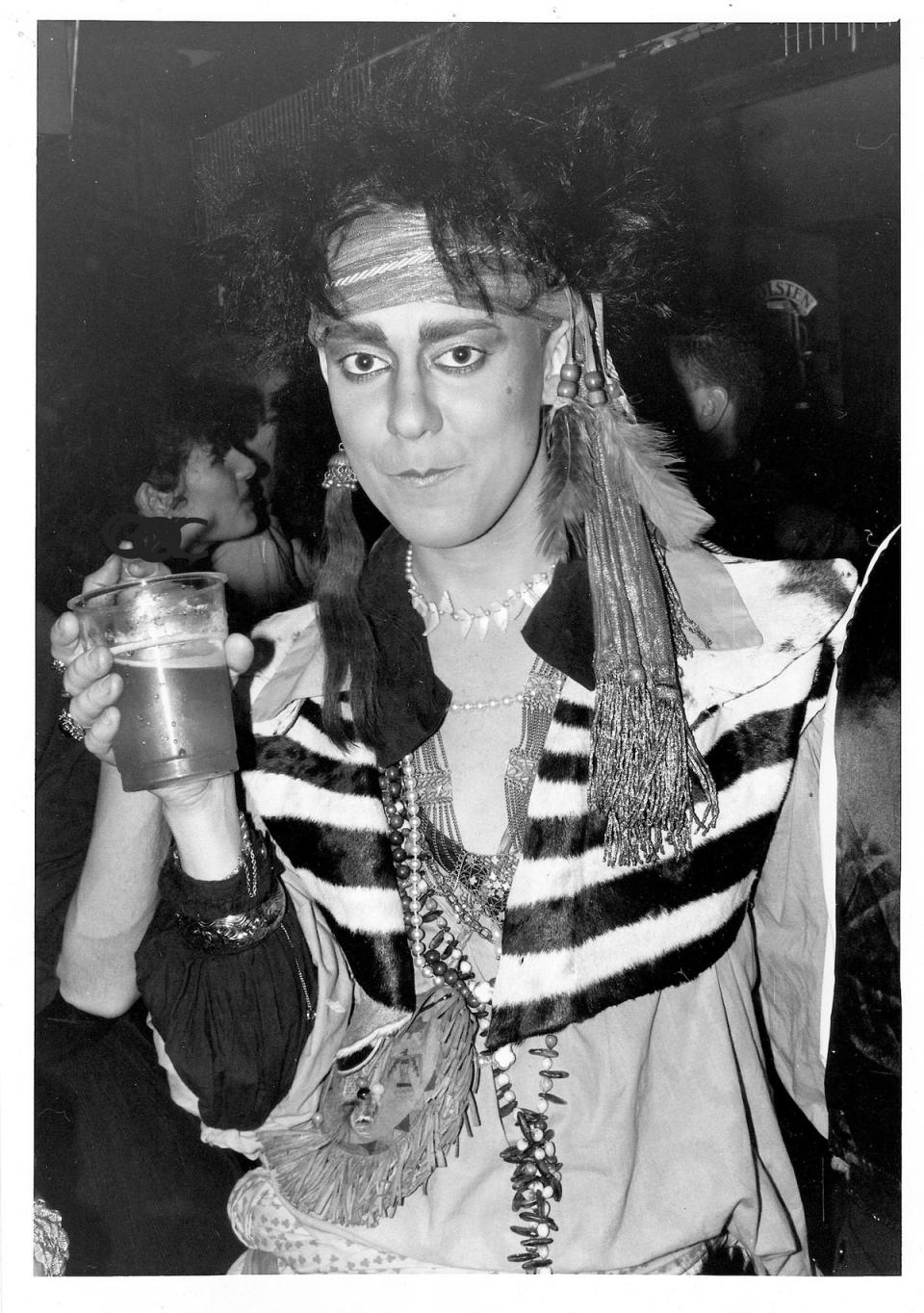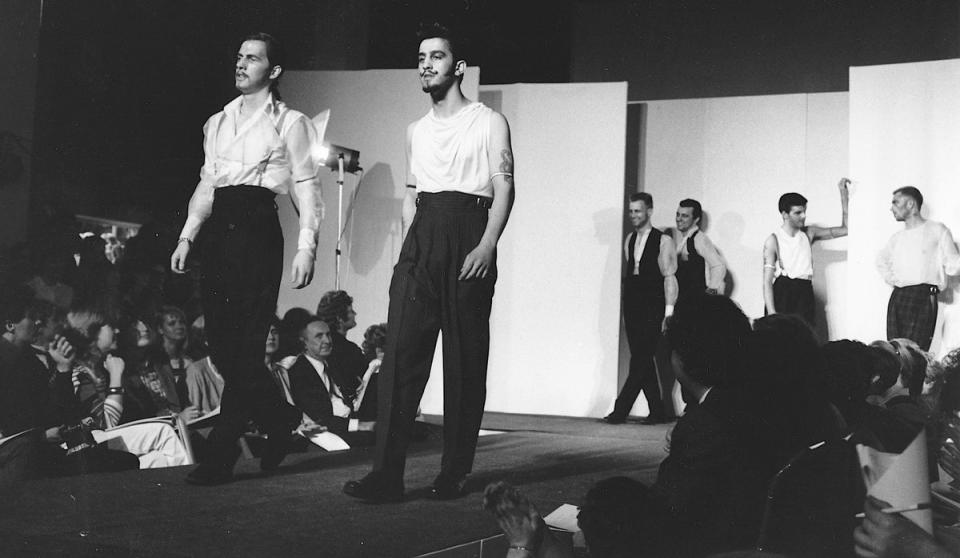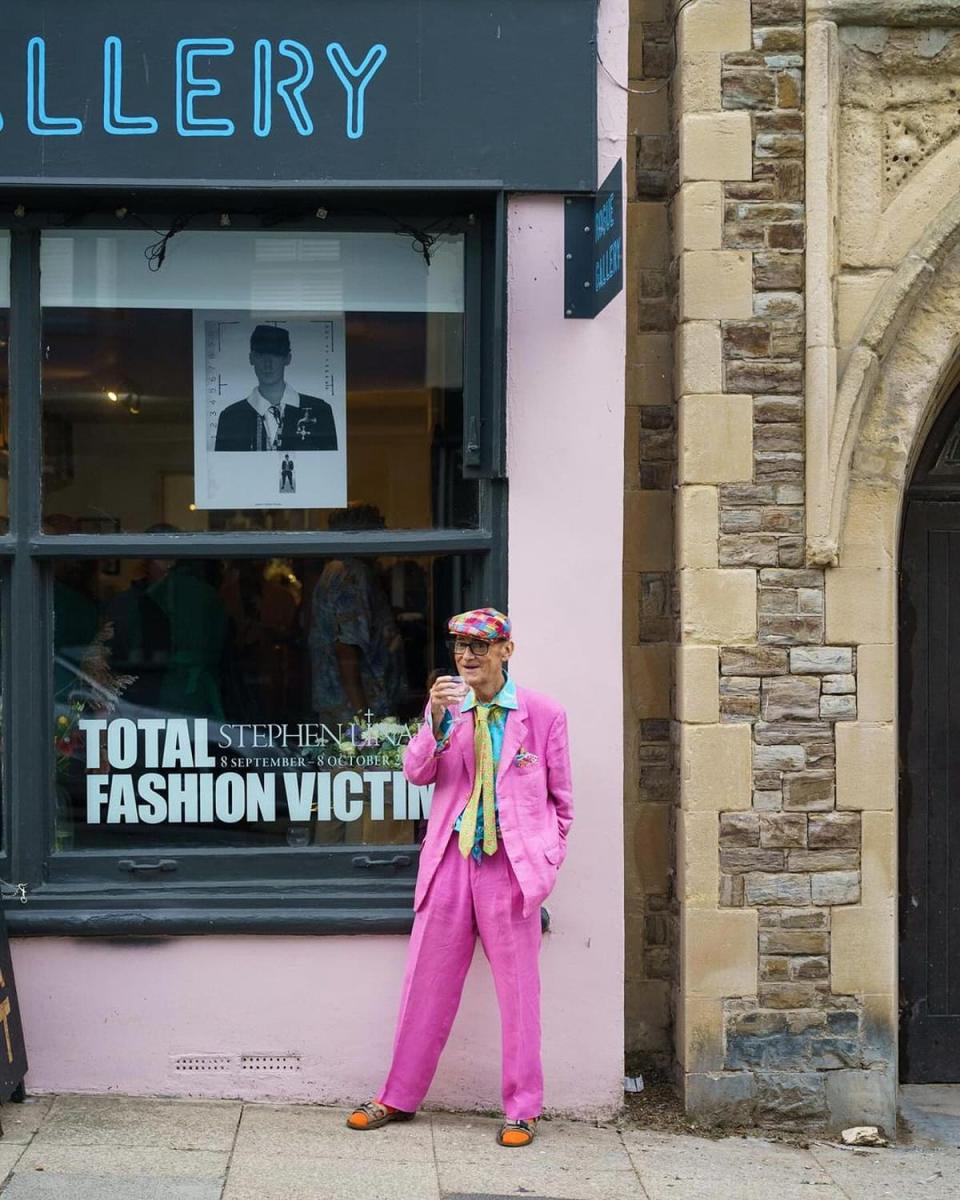Stephen Linard, the fashion designer from Blitz Kid who made clothes for David Bowie, Boy George And Spandau Ballet, passed away on March 10 at the age of 64, after battling painful cancer in recent months. David Johnson recalls the life and career of the man he knew:
The press called them the New Romantics and the Blitz Kids and declared the 1980s the era of the pose. Rosetta Brooks, a lecturer at the art school, compared their self-consciously designed poses to ‘street theater that was eventually expanded into a continuous performance as a post-punk embodiment of Gilbert and George in one person (the individualist)’. Every poser, she believed, is a ready-made. Step forward fashion student Stephen Linard, who ticked all the boxes above – a flamboyant Canvey Island boy, born March 26, 1959, who attended Southend School of Art (1975-78) and longed to make a statement in every street or room he decorated.
Arriving at St Martin’s School of Art in London (1978-81), Linard pushed the boundaries of excess. Every year, second-year students staged an alternative fashion show, but in May 1980 the university’s resoundingly middle-class prim students were outdone when Linard sent out his sensational neon-Gothic collection – a stark collision of Space 1999, liturgical Gothic and Masonic colours. which was displayed in shops serving the Freemasons’ Hall, just down the road from the Blitz Club, the capital’s coolest nightspot.


The crowd erupted in cheers. Walking the catwalk to the Human League were the then unknown George O’Dowd, dressed in a floating post-punk mullet atop a sharp grosgrain suit with a dog collar, Michele Clapton and Myra Falconer dressed in a resurrected pallor under shaved heads, together with Fiona Dealey and Julia Fodor (now Princess Julia). Their robes were decorated with religious motifs and at the same time radiated a strangely sober chic. Finally came Lee Sheldrick, all in white like a ‘space-age pope’, the gifted Lee Sheldrick, who modeled a white silk grosgrain suit with his head shaved to become the embodiment of Nosferatu the Vampire. There were many reactions that led to the show’s title being adopted by the emerging goth movement.
A year later, Linard was determined to submit men’s clothing for his diploma collection, despite the attempts of the head of the fashion department to insist on women’s clothing. She even threatened to expel Linard from college until strong internal protests in support of Linard’s push for menswear eventually prevailed. His collection, titled Reluctant Emigrés, modeled by six of his handsome club friends, featured flowing cashmere overcoats, pinstriped pinstripe trousers and city shirts, all exuding an Edwardian air of impeccable tailoring punctuated by sharp detailing.


Linard’s street-savvy boys made a loud impression, as Fleet Street’s Suzy Menkes noted in print. Historians Alan J. Flux and Daryl F. Mallett have also written, “The clothes were instantly desirable, thoroughly masculine in a whole new way, and exciting in the way only the truly innovative can be.” Linard obtained his first-class Honors degree.
The fashion press cheered him on when he graduated. His outrageous fashion details set the direction for the two dozen sharpest Blitz Kids who shaped the silhouette of the New Romantics from the Blitz onwards. Most importantly, Linard changed his own appearance daily: from his foppish Fauntleroy dandy, to the Endangered Species outfit made from animal skins, to the cowboy gilded from hat to toe. Linard has admitted: “The competition pushed you, especially Lee Sheldrick. In the Warren Street squat [where they lived] you could change what you would wear eight times on a Tuesday to try to outdo everyone else at the Blitz.
Inspiration was everywhere. In 2020, Linard said: “The Blitz was a club for art students. The place was filled with artists: Brian Clarke, Zandra Rhodes, Molly Parkin, Antony Price, Duggie Fields, Kevin Whitney and us, as it was halfway between Central School and St Martin’s. People who said, “Oh, you Blitz Kids DON’T DO anything,” were talking nonsense, because WE all did. We were the ones who had our work in the glossy magazines long before the rest.”
Linard’s styles were always sought after by pop star contemporaries, from Spandau Ballet, Boy George, Frankie Goes to Hollywood, Haysi Fantayzee and The Slits, to U2, the Bee Gees, Womack & Womack, even Cliff Richard and Johnny Mathis, and eventually to the great god David Bowie himself.


In 1982, the Railway Children collection of striped Edwardian jackets and dresses for schoolgirls became the first of Linard’s two womenswear collections. He was one of six aspiring British designers taken to Paris by Blitz Club presenter Steve Strange to help launch his Anvil album, but also to show that the English could be as stylish as the French – featured in the coolest nightclub in Europe, Le Palace.
In the meantime, Linard’s reputation among the international fashion world grew. In 1983 he released his collection Angels with Dirty Faces, inspired by the Bogart-Cagney gangster film set in the Depression of the 1930s. It was both beautiful and moving and it sold worldwide. That year, the racy magazine of the day, New York, headlined a special fashion section ‘The British Are Here’, and selected Jean Muir, Zandra Rhodes, Katharine Hamnett, Vivienne Westwood – and Stephen Linard as Britain’s five leading figures : ‘one of the most creative young designers’.
From 1983 to ’86, Stephen lived in Tokyo and designed for Jun Co, the fashion giant, on a salary that, as he liked to boast, was higher than that of Prime Minister Margaret Thatcher. From 1989 until recently, Stephen was a key player in the design team at Drake’s, the respected men’s specialty store on Savile Row.


As recently as 2018, Laird Borrelli-Persson wrote online in Vogue: “Stephen Linard deserves credit for many innovations in fashion and its presentation that we take for granted… One of the Blitz Kids whose dandyish ways had a huge impact on the style of 1980s, his early work was distinguished not only by irreverence, but also by a strong sense of story… Linard emphasizes that it was not his intention to cause outrage. “I was into couture stuff and I was ‘just making clothes’, basically, as Sonia Rykiel used to say.”
From September to October 2023, a solo exhibition presented his archive of drawings, photographs and garments entitled ‘Total Fashion Victim’ at St Leonard’s-on-Sea, where he had lived since 2020 along with many other former Blitz Kids. Total Fashion Victim was the name of the one-nighter Linard that was organized at the Wag Club in the 1980s.
David Johnson is a freelance journalist. This piece originally appeared on his website shapersofte80s.com